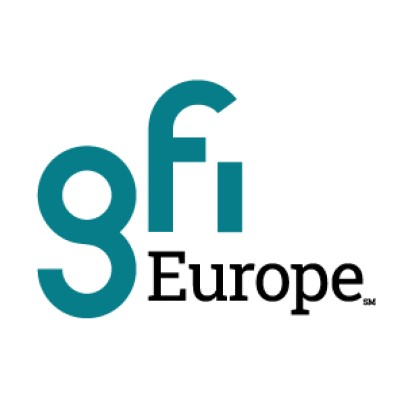The Green Surge: Plant-Based Food Sales Flourish in Europe
October 25, 2024, 5:32 am

Location: Belgium, Brussels-Capital, City of Brussels
Employees: 1-10
Founded date: 2019
In the heart of Europe, a culinary revolution is brewing. Plant-based foods are no longer a niche market; they are becoming a staple on dining tables across the continent. A recent analysis by the Good Food Institute (GFI) reveals that plant-based food sales in six major European countries surged to €5.4 billion in 2023, marking a 5.5% increase from the previous year. This growth is not just a flicker; it’s a flame that’s gaining momentum.
Germany leads the charge, with a market worth €2.2 billion. This is the land of bratwurst, yet it has embraced plant-based alternatives with open arms. The country saw an impressive 8% rise in value sales and a 9% increase in unit sales. More than a third of German households are now purchasing plant-based meat, a trend that is steadily climbing. It’s a testament to changing tastes and growing acceptance.
Plant-based milk and drinks follow closely, valued at €805 million. The appeal of these products is undeniable, with 37% of households buying them multiple times. The price gap between plant-based and dairy milk is shrinking, making these alternatives more accessible. In fact, private-label plant-based milks are cheaper than their dairy counterparts, costing an average of just €1.12 per liter. This shift is crucial. When prices align, consumers take notice.
France, Italy, the Netherlands, Spain, and the UK are also part of this green wave. France reported a retail market valued at €648 million, with plant-based meat and milk driving the growth. Italy, too, saw an 8% increase, reaching €641 million. The Netherlands faced challenges, with declining unit and volume sales, but early 2024 shows signs of recovery. Spain, on the other hand, experienced a 7.5% increase, with plant-based milk leading the charge.
The UK paints a more complex picture. Sales dipped by 3%, largely due to inflation and the cost of living crisis. Yet, even in this environment, plant-based cream emerged as a bright spot, with a 10% increase in volume sales. The resilience of plant-based products is evident, even in tough times.
What’s driving this growth? Price parity is a key player. As the price gap narrows, consumers are more willing to explore plant-based options. The analysis highlights that lower prices and higher quality can fuel this growth. In Germany and the UK, branded dairy-free creams are now cheaper than traditional dairy, prompting a surge in sales. This trend is not just a blip; it’s a signal that plant-based foods are becoming mainstream.
Emerging categories like plant-based cheese and cream are also gaining traction. In Spain, plant-based cheese saw a remarkable 34% rise in volume, while cream alternatives experienced a 24% increase in sales. These products are no longer just substitutes; they are becoming preferred choices for many consumers.
However, not all categories are thriving. Plant-based desserts and non-dairy ice creams have faced declines, attributed to rising costs and shifting consumer priorities. As people tighten their belts, non-essential items are often the first to go. This reality underscores the importance of affordability in the plant-based sector.
The landscape is shifting, and companies must adapt. The GFI analysis emphasizes the need for innovation and infrastructure investment. To capture the hearts and wallets of consumers, manufacturers must focus on creating tastier, more affordable products. The path to success lies in understanding consumer expectations and delivering on them.
The plant-based movement is not just about food; it’s about sustainability and health. As more people recognize the environmental impact of their choices, the demand for plant-based options will likely continue to rise. This shift is not merely a trend; it’s a transformation in how we think about food.
In conclusion, Europe’s plant-based food market is on an upward trajectory. With Germany at the forefront and other countries following suit, the future looks bright. As price parity improves and new products emerge, consumers are increasingly embracing plant-based options. The culinary landscape is evolving, and the green surge is just beginning. This is not just a movement; it’s a revolution. The plates of Europe are changing, and they are greener than ever.
Germany leads the charge, with a market worth €2.2 billion. This is the land of bratwurst, yet it has embraced plant-based alternatives with open arms. The country saw an impressive 8% rise in value sales and a 9% increase in unit sales. More than a third of German households are now purchasing plant-based meat, a trend that is steadily climbing. It’s a testament to changing tastes and growing acceptance.
Plant-based milk and drinks follow closely, valued at €805 million. The appeal of these products is undeniable, with 37% of households buying them multiple times. The price gap between plant-based and dairy milk is shrinking, making these alternatives more accessible. In fact, private-label plant-based milks are cheaper than their dairy counterparts, costing an average of just €1.12 per liter. This shift is crucial. When prices align, consumers take notice.
France, Italy, the Netherlands, Spain, and the UK are also part of this green wave. France reported a retail market valued at €648 million, with plant-based meat and milk driving the growth. Italy, too, saw an 8% increase, reaching €641 million. The Netherlands faced challenges, with declining unit and volume sales, but early 2024 shows signs of recovery. Spain, on the other hand, experienced a 7.5% increase, with plant-based milk leading the charge.
The UK paints a more complex picture. Sales dipped by 3%, largely due to inflation and the cost of living crisis. Yet, even in this environment, plant-based cream emerged as a bright spot, with a 10% increase in volume sales. The resilience of plant-based products is evident, even in tough times.
What’s driving this growth? Price parity is a key player. As the price gap narrows, consumers are more willing to explore plant-based options. The analysis highlights that lower prices and higher quality can fuel this growth. In Germany and the UK, branded dairy-free creams are now cheaper than traditional dairy, prompting a surge in sales. This trend is not just a blip; it’s a signal that plant-based foods are becoming mainstream.
Emerging categories like plant-based cheese and cream are also gaining traction. In Spain, plant-based cheese saw a remarkable 34% rise in volume, while cream alternatives experienced a 24% increase in sales. These products are no longer just substitutes; they are becoming preferred choices for many consumers.
However, not all categories are thriving. Plant-based desserts and non-dairy ice creams have faced declines, attributed to rising costs and shifting consumer priorities. As people tighten their belts, non-essential items are often the first to go. This reality underscores the importance of affordability in the plant-based sector.
The landscape is shifting, and companies must adapt. The GFI analysis emphasizes the need for innovation and infrastructure investment. To capture the hearts and wallets of consumers, manufacturers must focus on creating tastier, more affordable products. The path to success lies in understanding consumer expectations and delivering on them.
The plant-based movement is not just about food; it’s about sustainability and health. As more people recognize the environmental impact of their choices, the demand for plant-based options will likely continue to rise. This shift is not merely a trend; it’s a transformation in how we think about food.
In conclusion, Europe’s plant-based food market is on an upward trajectory. With Germany at the forefront and other countries following suit, the future looks bright. As price parity improves and new products emerge, consumers are increasingly embracing plant-based options. The culinary landscape is evolving, and the green surge is just beginning. This is not just a movement; it’s a revolution. The plates of Europe are changing, and they are greener than ever.
